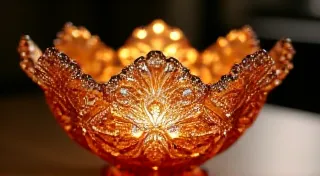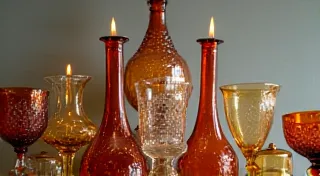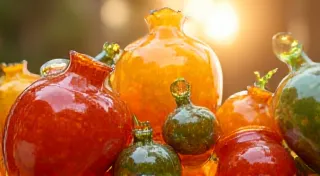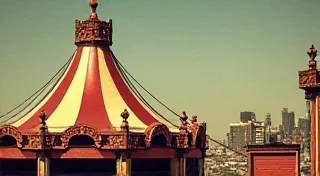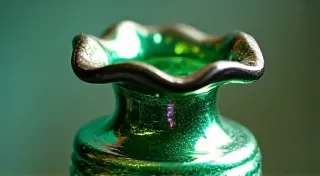A Beginner's Guide to Carnival Glass: History, Colors, and Common Patterns
Welcome to the captivating world of carnival glass! This beautiful, shimmering glass has charmed collectors for generations. If you're just starting your journey into glass collecting, this guide will provide a solid foundation for understanding its history, recognizing its vibrant colors, and identifying popular patterns.
What is Carnival Glass?
Carnival glass is a type of pressed glass manufactured primarily between 1903 and 1930, though production continued sporadically into the 1940s. It’s characterized by its iridescent surface, which gives it a shimmering, rainbow-like effect. Unlike glass with applied iridescent coatings, carnival glass’s iridescence is achieved through a unique manufacturing process. During production, a layer of metallic oxides (typically including iron, copper, and cobalt) is applied to the glass. This layer isn’s polished; instead, it’s left to react with the hot glass during the pressing process, creating the distinctive, swirling iridescence. The specific combination of oxides, the cooling speed, and the chemical composition of the glass itself all influence the final color and intensity of the iridescence. The effect can be truly mesmerizing, a testament to the skill of the glassmakers of the era.
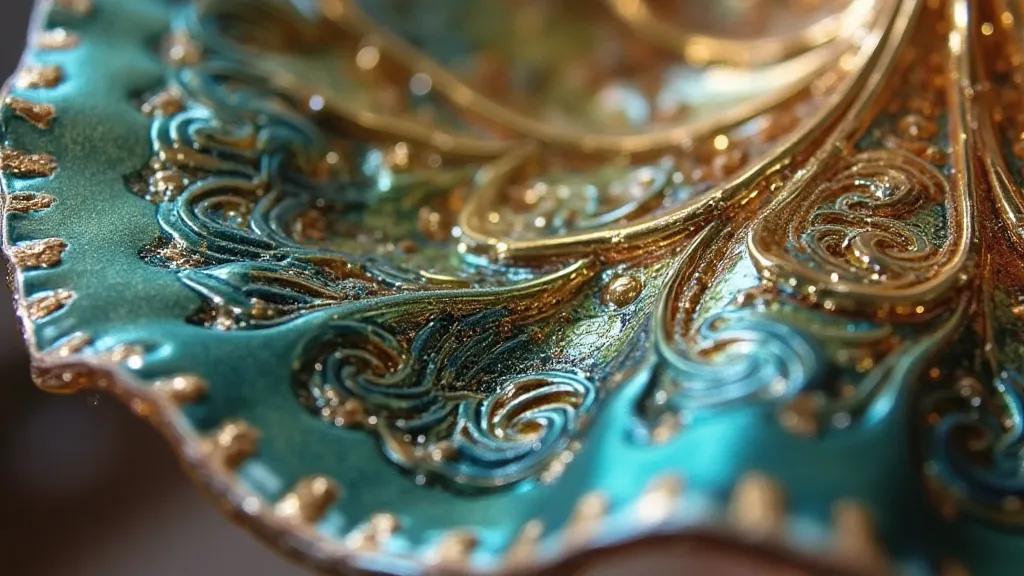
A Brief History
The boom in carnival glass production coincided with the rise of traveling carnivals and amusement parks in the early 20th century. While not directly used as prizes in games (more valuable pieces were often sold at concession stands or sold directly to collectors), the name "carnival glass" stuck, reflecting the era and the excitement surrounding these popular events. The readily available and relatively inexpensive nature of the glass made it accessible to a wide audience. It wasn't merely a decorative item; it was often a symbol of celebratory moments and fleeting pleasures, intrinsically linked to a specific period in American culture. US was the primary producer, although some production occurred in England and elsewhere. The relatively simple process allowed for mass production, keeping costs low and fueling its popularity. Many collectors are fascinated by the specific techniques used; those interested in a deeper dive into the history of American glassmaking might find The History of Fenton Carnival Glass: A Legacy of Beauty a compelling read, exploring the role of one prominent manufacturer. The rise of these vibrant carnivals and fairs created a unique cultural landscape, and understanding this context is key to appreciating the significance of carnival glass.
Common Colors and Their Origins
Carnival glass comes in a wide range of colors. Here's a look at some of the most well-known:
- Vaseline (Uranium) Glass: Perhaps the most recognizable, Vaseline glass exhibits a distinctive yellow-green hue. This color is due to the presence of uranium oxide in the glass. It glows under ultraviolet (black) light, a fascinating trait that’s become popular among collectors. The glow itself is a result of the uranium absorbing ultraviolet light and re-emitting it as a visible glow – a scientific marvel combined with artistic beauty. The intensity of the glow can vary, often dependent on the concentration of uranium oxide used and the thickness of the glass.
- Peachblow: A beautiful soft orange-pink color, often considered one of the rarest and most desirable hues. The delicate shades of peachblow are a testament to the skill involved in controlling the chemical reactions during the manufacturing process. Peachblow pieces, due to their rarity and the difficulty in achieving the desired color, often command significant premiums in the collector's market.
- Amethyst: A lovely purple shade, often with a rich, deep tone. The depth of the amethyst color can vary considerably, influenced by the precise combination of elements used in the glass’s creation. Some amethyst pieces exhibit a subtle iridescence that further enhances their beauty.
- Blue: Ranging from light sky blue to a more intense cobalt, blue carnival glass is quite common and very attractive. The varying shades of blue offer a broad spectrum of aesthetic appeal. The blues, along with the greens, represent some of the most accessible entry points for new collectors.
- Green: Various shades of green, from light seafoam to deeper forest green, are frequently found. The range of green shades reflects the versatility of the process and the ability to achieve different tones through careful manipulation of the ingredients.
Recognizable Patterns
Beyond the colors, carnival glass patterns are another key identifier. Here are a few common ones:
- Peacock: This iconic pattern features undulating, fan-like shapes that resemble peacock feathers. It's considered a hallmark of carnival glass and is highly sought after by collectors. The complexity of this pattern is quite remarkable, achieved through the intricate pressing molds used during manufacturing. The process of creating these molds themselves was a testament to the skill of the artisans of the time.
- Ironspot: Characterized by irregular spots resembling iron filings embedded in the glass. The seemingly random placement of the ironspot pattern adds a unique charm to each piece. The variation in the ironspot pattern ensures that no two pieces are exactly alike.
- Slag Glass: This pattern features a mottled appearance, as if fragments of different colored glass are swirled together. The unpredictable nature of the slag glass pattern makes each piece truly one-of-a-kind.
- Thumbprint: As the name suggests, this pattern has a textured surface with raised bumps, often resembling fingerprints. The tactile quality of the thumbprint pattern is quite distinctive.
- Vine and Maple: Features vine-like swirls and maple leaf-like shapes. The elegance and grace of the Vine and Maple pattern are consistently admired by collectors.
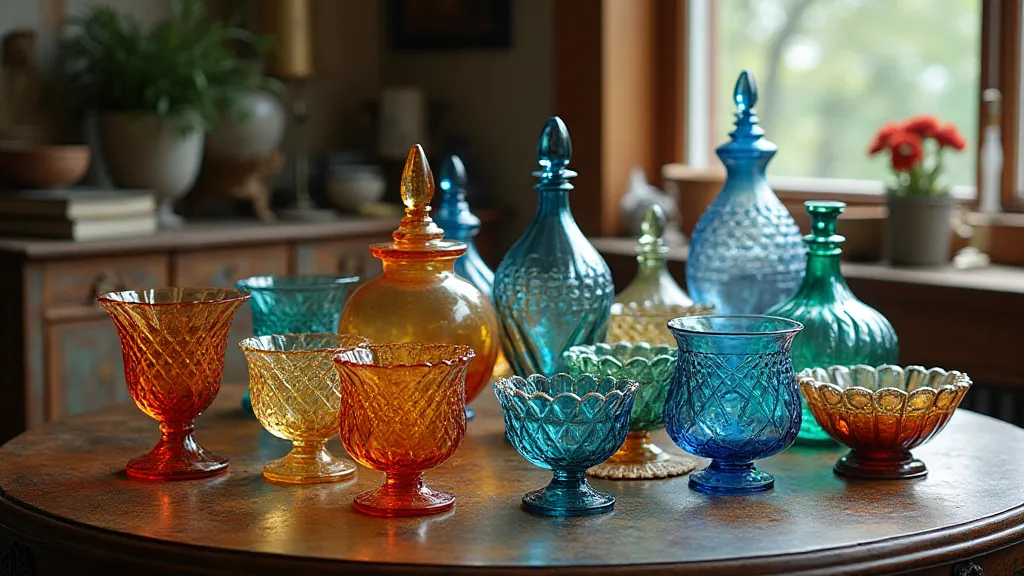
Understanding Value and Condition
Determining the value of a piece of carnival glass can be complex. While rarity certainly plays a role – Peachblow, for example, commands premium prices – the condition of the piece is often the most significant factor. Chips, cracks, and repairs significantly detract from value. Understanding the various factors that influence pricing is crucial for both buyers and sellers. Many collectors find it helpful to understand the nuances of how condition impacts the perceived value. For a more detailed breakdown of the elements that contribute to carnival glass valuation, consult Decoding Carnival Glass Prices: Factors Affecting Value. The market can fluctuate, and staying informed about current trends is essential for making informed decisions. Determining authenticity is also crucial; reproductions exist, and a knowledgeable eye is needed to distinguish them from genuine antique pieces.
Tips for Beginners
Starting a carnival glass collection can be an exciting journey. Here are some tips to help you along the way:
- Research: Spend time studying different patterns and colors. Online resources and books are invaluable. Distinguishing genuine antique carnival glass from reproductions can be tricky. The more you learn about the manufacturing process and the history of carnival glass, the better equipped you're going to be.
- Handle with Care: Carnival glass can be delicate. Avoid sudden temperature changes, which can cause cracking. These pieces were not made to withstand modern-day rough handling, and proper care is essential.
- Beware of Reproductions: Newer reproductions of carnival glass exist. They generally lack the depth and richness of color found in genuine antique pieces. Carefully examine the glass for imperfections and thickness. Modern reproductions often utilize different manufacturing processes, which results in a noticeable difference in quality.
- Check for Damage: Look for cracks, chips, and repairs. These can significantly impact the value. Even seemingly minor imperfections can impact desirability and value.
- Learn to Identify Markings: While many pieces are unmarked, some manufacturers did apply identifying marks. Recognizing these marks can aid in dating and attributing pieces. For those seeking to understand the nuances of these markings, Understanding Carnival Glass Markings: What to Look For provides a comprehensive guide. The presence or absence of a maker's mark can also offer clues about the age and provenance of a piece.
- Connect with the Community: Join online forums or local collector's clubs. Talking to experienced collectors is a great way to learn and share information.
Resources for Further Exploration
The world of carnival glass is vast and fascinating. There are numerous clubs and organizations dedicated to the study and appreciation of this beautiful glass. Consider joining one to connect with fellow enthusiasts and deepen your knowledge. These communities can offer a wealth of information and provide a supportive environment for collectors of all levels. Learning the history and context of carnival glass enhances the enjoyment of collecting and appreciating these beautiful pieces.
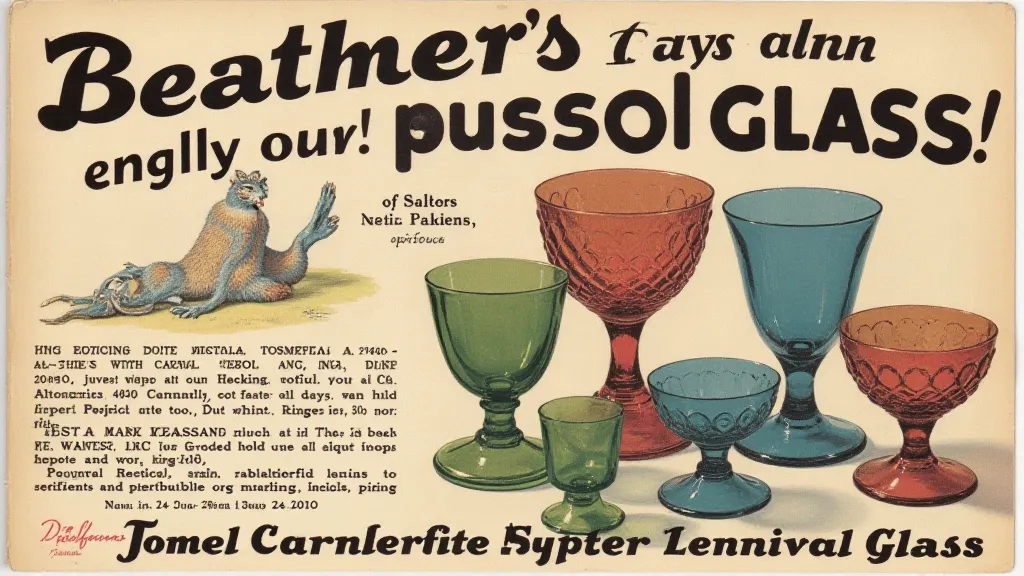
Happy collecting!
